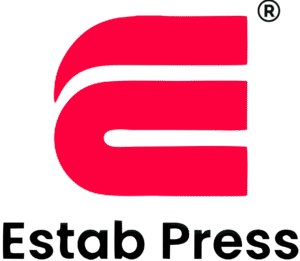Interior and Cover Designing
Your Book Cover Design is the First Impression Readers have of your Book. While it’s important to be unique, it’s equally important to pay attention to what comparable covers in your genre look like.
Visit your local Bookstore and look at the Books in your genre. What are the trim sizes? What do the Front Covers look like? The spines? Take note of the imagery, the fonts, the colors, and more. Observe and ask yourself, what elements of these book covers do I like? How can my Book Cover stand out in a Good Way?
The Back Cover of the Book will be made up of common elements such as Book Reviews, the Book Description, Author bio and Barcode. The Spine often contains the Name of Book, the Name of Author and Publisher’s logo.
Study these elements to make sure that your Book will fit in on the shelf and Booksellers will feel comfortable stocking it.
Our professional Book Cover Designer help steer the creative direction but you know your Book Best and it’s important for you to bring your own Ideas to help create a cover that brings your Book to life.
If you have any specific photography or images that need to be included on your Book Cover Design, please submit them to our Designers with your brief.
Unless you request, otherwise our Designer may also use stock images (purchased from a third party) in your Book Design. If a Designer uses stock art in a Design, they’ll tell you which images they are and use watermarked versions of them in their entries. Once you choose the Winning Design, you’ll need to purchase the stock art and provide it to the Winning Designer, so they can complete the design.
Cover Of Book
Title, Author’s name, Subtitle, Tagline, imagery all typically appear on the Front cover of a Book.
Back Cover Of Book
Book reviews, Book Description, Author’s Biography, Blurb, Barcode and required Quote typically appear on the Back cover of a Book.
Spine Of Book
This often contains the Name Of Book, The Name of Author and Publisher’s Logo.
Interior Designing and Beautification
Interior Design might not sound like the Most Exciting part of the Design Process, but it is necessary to create a Professionally Published Book. Typesetting, commonly referred to as Book Formatting, has a seperate rules for the Period, Question Mark, Exclamation Point, Comma, Colon, Semicolon, Dash, Hyphen, Brackets, Braces, Parentheses, Apostrophe, Quotation Mark, Ellipsis and various other elements within a Book to make it more readable, ensuring a pleasant reading experience for your Readers.
Our Designers Follow 10 rules for Interior Designing
1. Determine the Size of Your Book
2. Determine the Font of Your Book
3. Use a Suitable Typical Font Size for Your Book
4. Get Creative with Chapter Pages
5. Set Appropriate Margins for Your Book
6. Better Adjustment of Headers and Footers for Your Book
7. Keep Attention to Special Pages for Your Book
8. Put Illustration in Proper Way in Your Book
10. Discuss With Author for a Best Book Title.
About Book Title
Original : Book Titles are not protected by Copyright, so it is possible to select a Book Title that’s already in use but not recommended.
Memorable : Make sure your Book Title is Unique enough to be remembered, but not so long that it’s easily forgotten.
Searchable : Once you have a few ideas, do a quick Google Search. See what shows up in the results and ask yourself a few important questions. What shows up on the search results page? Does my book stand a chance? Is it too broad to rank, or too specific for anyone to be searching for?
As you’re brainstorming Ideas for your Book Title, keep in mind that you have an opportunity to enhance your short Title with a longer subtitle.
We Help in writing for Book Description
The cover of your book draws a person in….. the Title intrigues…. and the Book Description closes the deal.
So, how do you write a Good Book Description?
• Keep it simple and straightforward
• Aim for 150-200 words
• Use paragraph breaks, bold, and italic formats to provide emphasis when necessary
• Insert bullet points when applicable
• Avoid time-sensitive language like “coming soon” Another tip for writing your description look up reader reviews for books that are similar to yours. What language are they using? Let their descriptions of similar books help guide you as you write yours.
Your description is more than just text on the back cover of a book. It’s detailed, descriptive copy that will be used in your marketing and help your book’s discoverability. You want your description to appeal to a person picking it up off the shelf at a bookstore, as well as Google’s search algorithm. The keywords in your description impact your book’s discoverability online.
So be sure to keep keywords in mind as you write and incorporate them into your description when it’s natural and appropriate.
